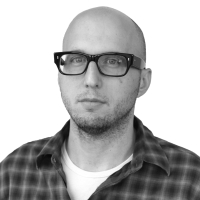As Broadway theater crowds quaffed Moet and nibbled crème brûlée, and midnight crowds moved obliviously about, New Yorkers renewed the protests they had staged over the death in police custody of Eric Garner—this time motivated by outrage over the death of another black man, Freddie Gray, in Baltimore.
Authorities arrested as many as 60 people in New York City on Wednesday night, according to reports, as activists took to the streets to show support for protests in Baltimore. The total number of arrests seemed likely to rise as protests continued Wednesday night.
The Baltimore protests, which turned into riots in parts of that city Monday, stemmed from the death of 25-year-old Gray, who died in police custody when his spinal cord was nearly severed. In addition to New York, Gray’s death touched off protests in Washington, D.C., and elsewhere.
Chaos in Baltimore Continues (PHOTOS)

In New York, Matthew Vazquez left Madison Square Garden and saw a swarm of NYPD cops shuttle past him. He said it was the first time he’d seen police in full riot regalia.“I saw them in helmets and batons,” the 18-year-old Fordham University student told The Daily Beast. “It really scared me.”The freshman was heading home to The Bronx, where he lives with his family, but decided to join the march. “My phone is dead and I’m sure my family is wondering where I am,” he said, laughing. “I’ve suffered long enough in silence and me being out here, I hope people will acknowledge that we live in a corrupt system.”Like Vazquez, 60-year-old Arafa Speaks didn’t plan to protest Wednesday night. Unlike the student, Speaks doesn’t have a home to go to. She’s homeless. But when the crowd marched passed her shelter, Speaks persuaded a woman to let her hold a black sign with white stenciled letters that read: “Is Life a White Privilege?”The other side of the sign read, “Justice for Freedom,” painted in red. Speaks said the protest was sending multiple messages. “We’re not just talking about killing and murdering, but also what’s going on with the prison system and the murders of the homeless,” she said. She added that she was pleased with the protest, but said that for the movement to make a difference it needs leadership. “We’ve got to get organized. We’re not organized,” she said. She pointed to what she considered a victory of sorts: “There was no violence and no incidents; nobody attacked anybody.”Before the Baltimore-sparked protest sparked protest, there had been weeks of marches in New York, beginning last year. The earlier protests erupted after no criminal charges were brought in the case of Eric Garner, the unarmed black man who died after being placed in a chokehold by a NYPD police officer.
Following a pattern established during earlier demonstrations, protesters initially met Wednesday night at the park at Union Square.
Flyers handed out by the New York Police Department in the protest’s early stages warned of arrests for “groups of pedestrians” blocking sidewalks and streets.
The flyers did not deter protesters from gathering, but police began making arrests before nightfall.
Some veteran New York activists suggested that police were more aggressive in making arrests than they had been during past protests.
Following the arrests at Union Square, the assembled throng appears to have split into several smaller groups that marched in different directions. As nightfall crept up, the critical mass that had assembled at the square began splintering south and then yo-yoing back uptown.
A group of snarky college students walked pass a line of police cars parked along Fifth Avenue near the New York University campus. “We need more paddy wagons. More and more paddy wagons,” they snickered.One cop was joking that his long night didn’t buy him collateral to show up late. “Quit your whining, I have to be at 1PP at 9 a.m.”—using shorthand for the NYPD headquarters.Just before midnight, a group of fewer than two dozen protesters were idling on the Midtown corner of 42nd Street and 8th Avenue.One woman was screaming at the police lined up watching the protesters, saying that the killing of young blacks is epidemic. “You hate black Americans,” she kept repeating.As with the protests following Garner’s death, demonstrators attempted to block roadways. The Holland Tunnel was briefly closed, and traffic was disrupted on the West Side Highway, before police began making arrests and the protests moved on.
Anthony Rosado, a 24-year-old teacher, said he came out so he could have something to discuss in his high school global history class in the morning. “This is happening all the time,” said Rosado, who was born and raised in Brooklyn. “This is systemic. And it goes beyond police. It’s about power structures.”
Rosado said the agenda for his next class would be dictated less by a lesson plan than by his students. “We’ll talk about the protest in the morning,” he said, adding that he’s not going to force any issues on his pupils. “I’m just going to tell them I was here—but let them speak their mind.”







